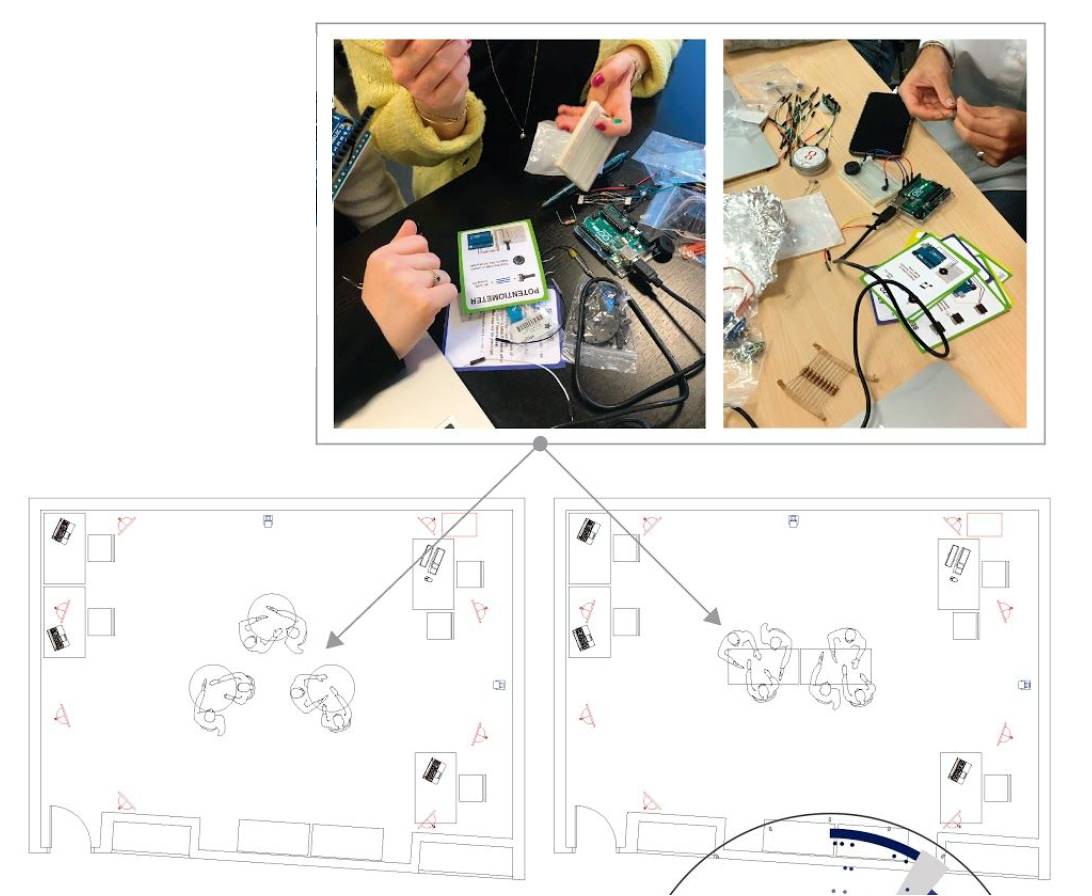Learners’ physical surroundings may affect the development of collaborative learning
Learners’ physical surroundings may affect the development of collaborative learning
The effect of the shape of the tables in social interaction and patterns of participation is the question raised by members of the DTIC for pupils ranging from primary school to university. They present their results in an article published on 30 June in the British Journal of Educational Technologies.

The effects of physical surroundings on learners’ behaviour in collaborative problem-solving tasks is a little-known subject. A study conducted by members of the Interactive and Distributed Technologies for Education (TIDE) and SIMBIOsys research groups at the UPF Department of Information and Communication Technologies (DTIC), together with members of the University of Malmö (Sweden), has approached this issue using multimodal learning analytics, with new datasets, to study how the shapes of shared tables affect learners’ behaviour when collaborating, in terms of patterns of participation and indicators related to physical-social interactions.
The study research team comprises Milica Vujovic, Davinia Hernández-Leo, of the TIDE group, Simone Tassani, of the SIMBIOsys group, and Daniel Spikol, of the University of Malmö (Sweden). On 30 June, they published their results in an article in the British Journal of Educational Technologies.
For primary school students, the use of round (as opposed to rectangular) tables leads to higher levels of participation. However, for university students, this same issue seems to have a limited impact
“Our findings support previous research that highlights the importance of studying the role of the physical environment as an element of learning design and the potential of multimodal learning analytics in approaching these studies”, the authors suggest.
The research presented in this paper studies the behaviour of students considering potential interaction with contextual aspects (level of education) and learning design decisions (group size). In the analysis process, the authors distinguish three independent variables (work table shape, level of education, and group size) and three dependent variables (level of participation, distance between students, and range of motion). Data were collected using a motion capture system and video recordings.
Data analysis shows significant differences with regard to the relationship between group size and the distance between students, but there is no substantial evidence that group size affects level of participation.
For primary school students, the results show that the use of round (as opposed to rectangular) tables leads to higher levels of participation. However, for university students, the different table shapes seem to have a limited impact on their levels of participation in collaborative problem-solving.
These findings support previous research that highlighted the importance of studying the role of the physical environment as an element of learning design and the potential of multimodal learning analytics in approaching these studies.
Reference work:
Milica Vujovic, Davinia Hernández-Leo, Simone Tassani, Daniel Spikol (2020), "Round or rectangular tables for collaborative problem solving? A multimodal learning analytics study", British Journal on EducatioalTechnology,30 de juny, https://doi.org/10.1111/bjet.12988
